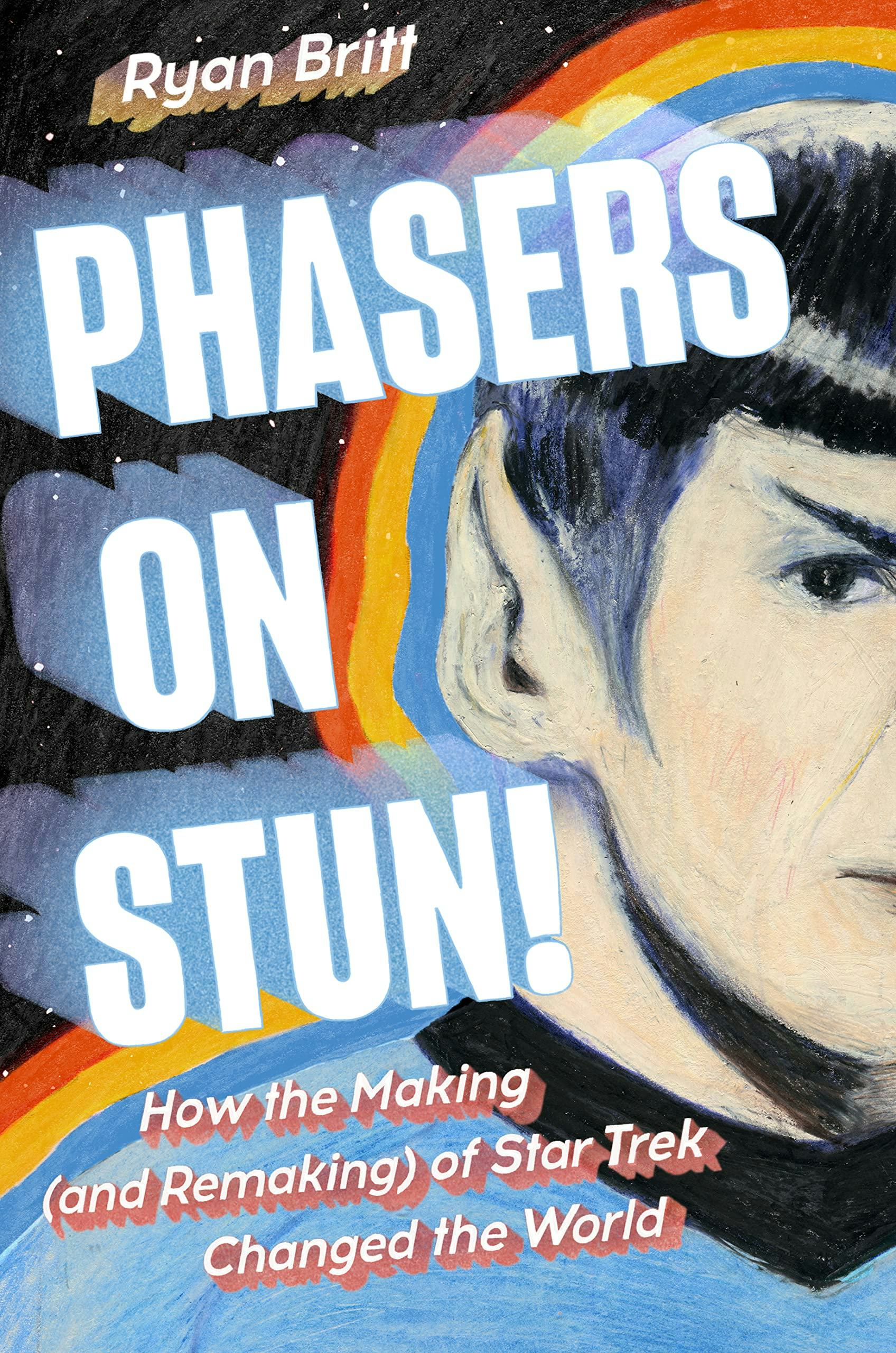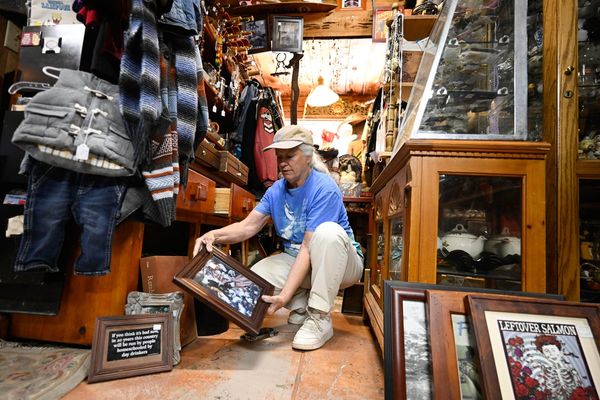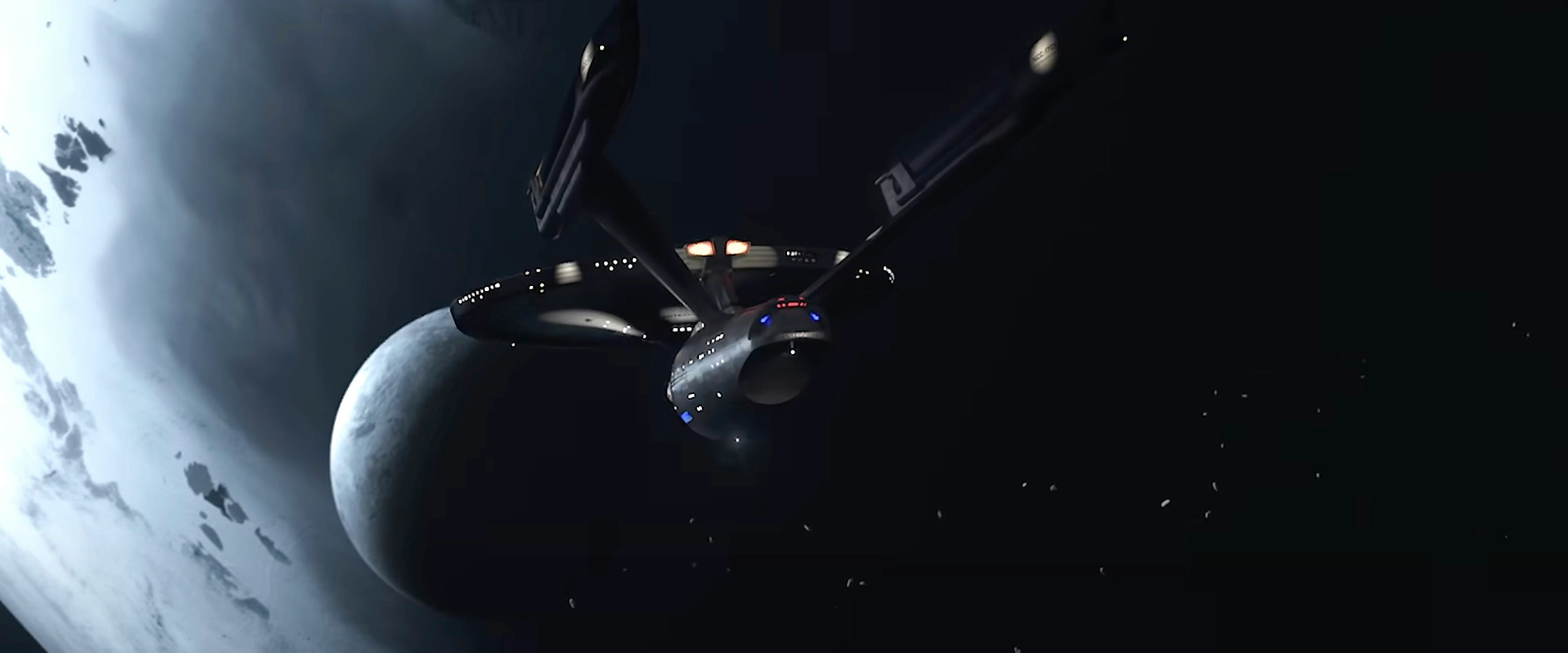
Star Trek continuity is confusing. But, it’s also beautiful. For nearly 60 years, various competing visual and sonic aesthetics have somehow represented a sprawling shared narrative. Unlike other shared cinematic universes like say, the MCU and Star Wars, the various iterations of Star Trek look and feel wildly different from one another. And yet the fandom and the various Trek creators of the years have all performed imaginative mental acrobatics to make sense of it all. In real life, it may seem absurd how often Starfleet changes its basic uniform structure or starship design, but in the tapestry of Trek, sorting out those differences is part of the fun.
In 2024, there was one standout, shining example of how subtle art can be made from something that is also, fundamentally, canon-obsessed fan service. The haunting, nearly wordless short film, titled 765874 - Unification, gave Trek fans everywhere closure concerning the fates of two characters who are arguably the most important men in Trek history: Kirk and Spock. The film appears to star William Shatner and the late Leonard Nimoy but manages to give us glimpses of those characters at different points in the timeline. Densely packed with Easter eggs, fans everywhere are still discussing this short, less than half a year after its release last November.
So Inverse got in touch with the film’s director, Carlos Baena, to delve into the deeper meaning of this journey, and answer some big Trekkie questions along the way.
The origins of 765874
Although the 2024 short film 765874 - Unification is the culmination of several concepts, it’s actually the longest of four shorts, which all tell a Star Trek multiverse story. The ending of the story, what we see in Unification, is the conclusion: After his demise in Generations, Kirk moves across the multiverse to the Kelvin timeline, to be with Prime Spock in his final moments. But, before that, the shorts 765874, Memory Wall, and Regeneration all provided brief groundwork for the bigger story. Because so much of what happens in this story requires heavy VFX, the studio OTOY is responsible for much of the heavy lifting, in conjunction with the Roddenberry Archive. Interestingly, although the Roddenberry Archive and several Trek movers-and-shakers are involved with this project (like Picard production designer Dave Blass), the Roddenberry Archive’s project operates somewhat independently from CBS and Paramount. Meaning, the events of all four shorts aren’t exactly canon, but they’re also not fan films, either.
“The 765874 stories began as an idea from Jules Urbach, OTOY’s CEO, and gradually evolved into an ongoing discussion of concepts, and themes,” director Carlos Baena tells Inverse. “For as long as I can remember, Jules has been committed to making J. Mia Colt — first introduced in ‘The Cage’ — a central character in these shorts.”
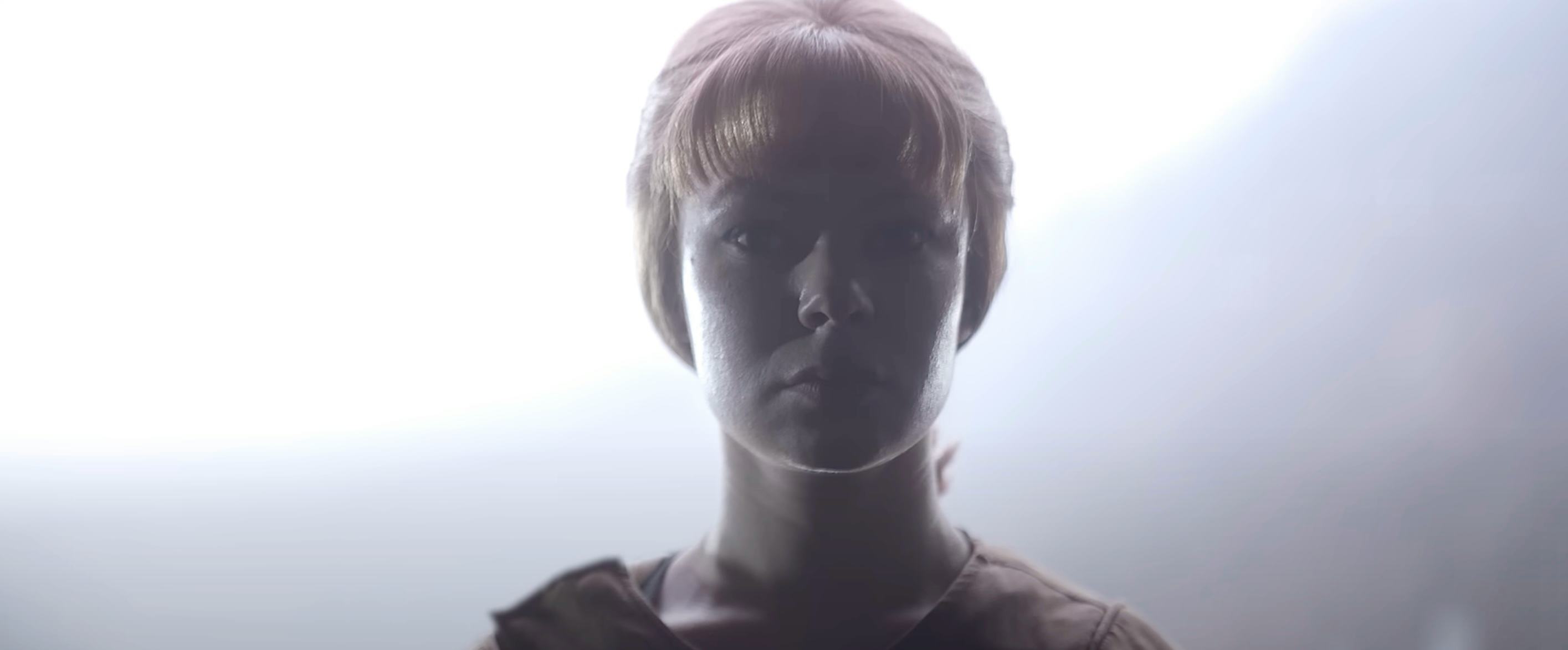
Colt, originally played by Laurel Goodwin in the 1964 pilot episode of Star Trek, “The Cage,” is a relatively obscure character, even for hardcore fans. But, for these shorts, the number “765874” refers to Colt’s serial number, because it’s her memories and connections that allow Kirk and Spock to find each other through the multiverse. Interestingly, this idea did not begin with Urbach or Baena, but instead, comes from a 1998 Marvel Comics storyline from the short-lived title, Star Trek: Early Voyages. In a four-issue storyline, Colt is zapped from the 2250s to the 2290s, which results in an alternate dimension in which Kirk never became the Captain of the Enterprise, and Pike never suffered his infamous accident.
Pike even rocks the monster maroon movie-era uniform, which, was something that happened in the Season 1 finale of Strange New Worlds, when an older version of Pike visited his younger self from an alternate future. In the first “765874” short we even see the original 1701 Enterprise in a museum in San Francisco, which would not be possible in the regular timeline, since that ship was destroyed in The Search for Spock. This too, dovetails with the Early Voyages comic book storyline, since that alternate future also showed the Enterprise in a museum in the alternate future.
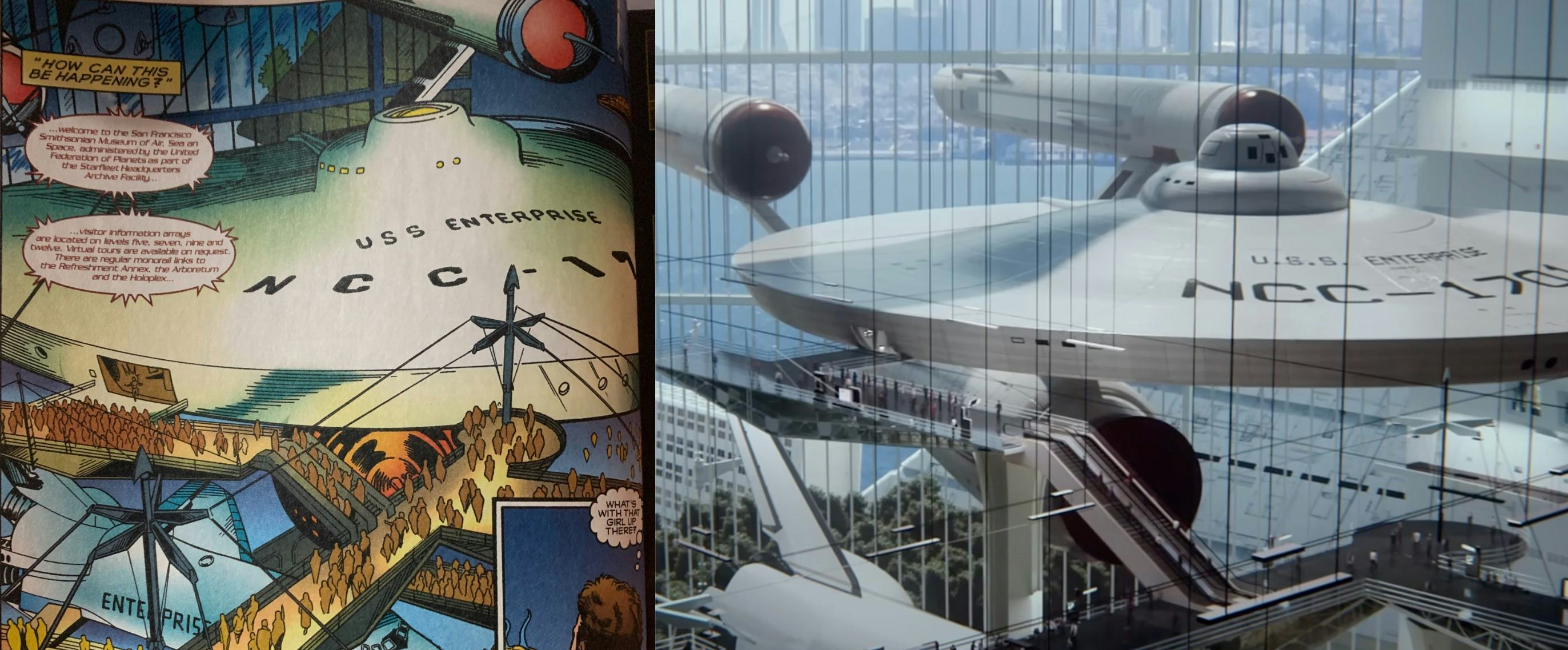
In the various 765874 shorts, Colt is played by Mahé Thaissa. “Jules introduced me to the Early Voyages graphic novels, always intending to slowly give Colt a stronger presence and a bigger voice in these stories,” Baena says. But she’s not the only person involved with Kirk and Spock’s multiverse journey.
The Meaning of the Trek Multiverse
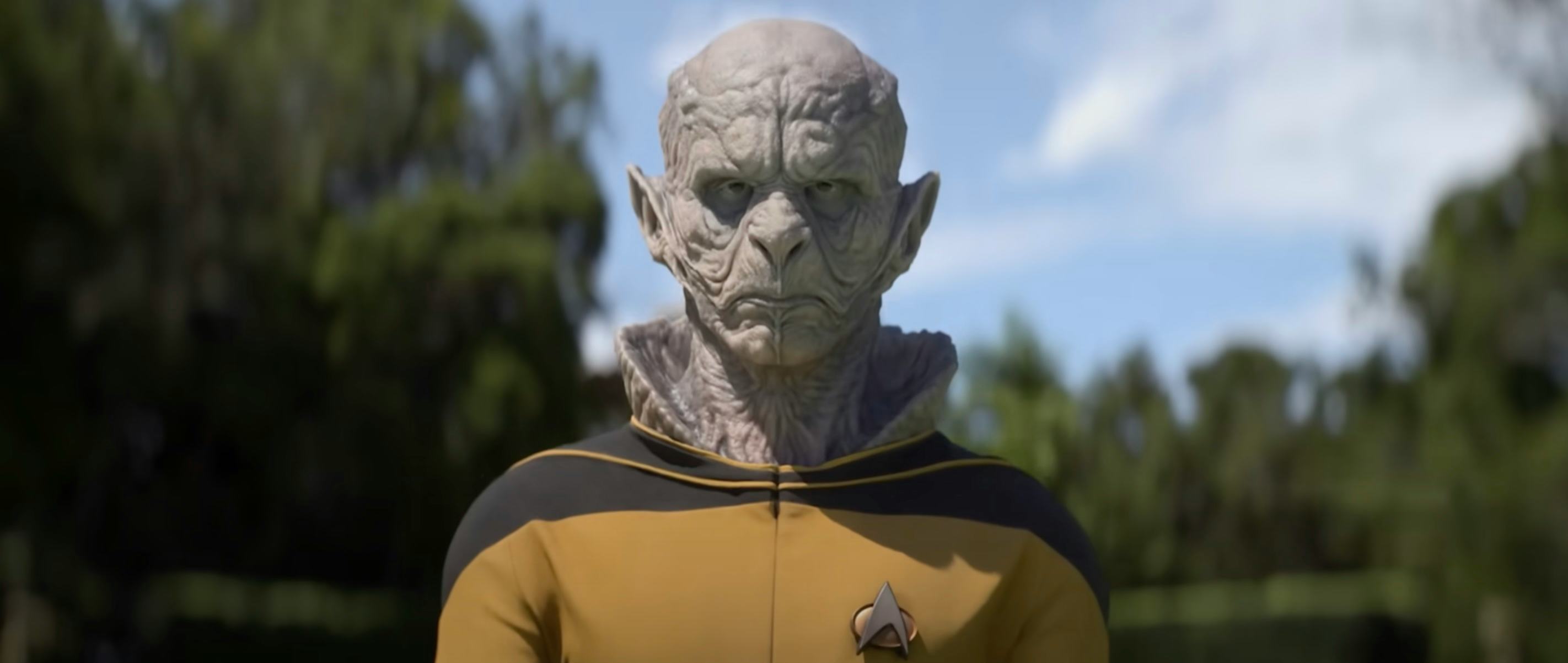
Outside of deep-cut comic book connections, there’s another way that the deceased Kirk from Generations finds his way to the Kelvin Universe to meet up with Spock. One character from Star Trek: Discovery Season 3 who was only glimpsed as a hologram, was the person who bridged the gap between the Prime Universe and the Kelvin Universe. That character is known as Yor, an alien in a TNG-era uniform, but really, from the future of the Kelvin Universe movies. He was introduced in the Discovery episode “Terra Firma Part 1” in 2020, which, at the time, marked the first instance that a Prime Universe Trek series outright referenced the Kelvin Universe. For Baena, this detail was key, because it represented a moment from onscreen canon that confirmed at least one person (other than Spock) had crossed between these two timelines.
“Yor’s previously established unique ability allows him to traverse both time and universes,” Baena explains. “When he gives the badge to Kirk, it holds a very specific significance — it was Spock who kept it, preserving it until the very end. The implication is that Spock wants to reunite with Kirk and hopes for this final reunion.”
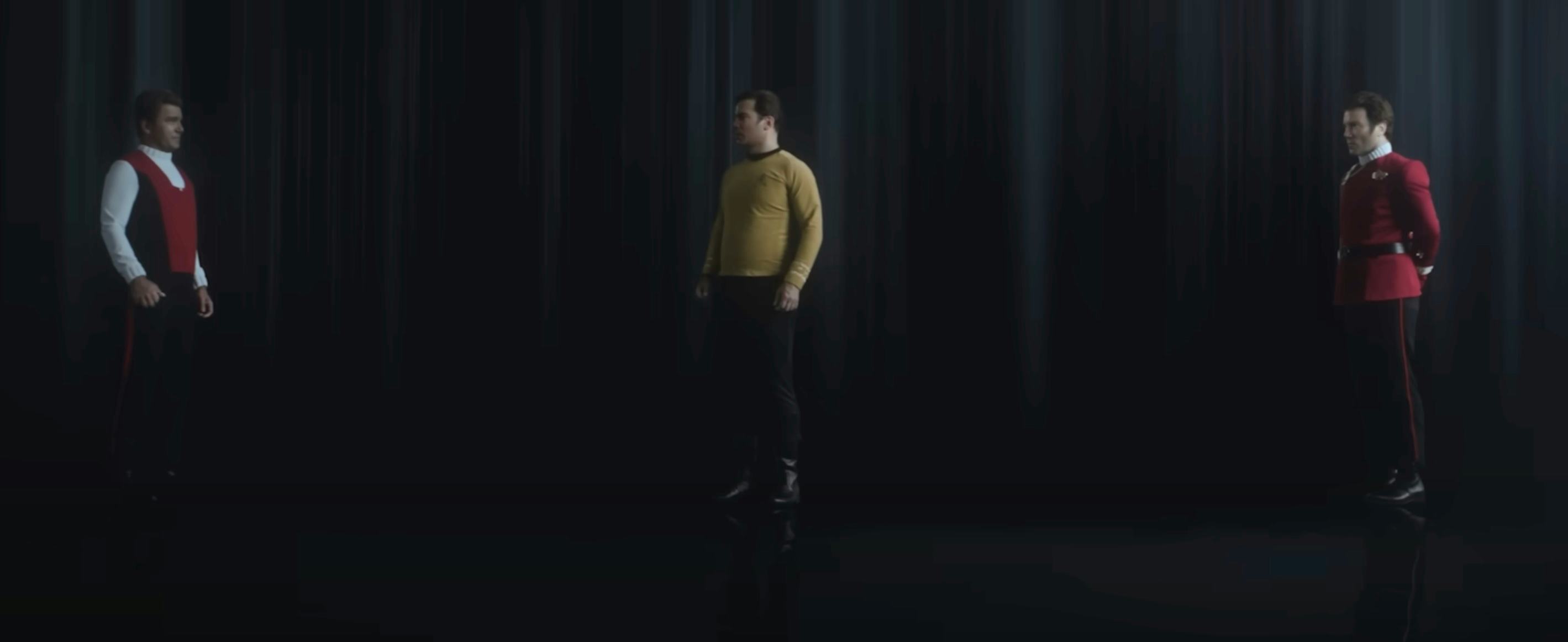
The old Starfleet badge in question is the one that Picard put on his grave, and later retrieved by Spock in the short “Regeneration.” And, in these scenes, and throughout all the shorts, Baena kept dialogue to an absolute minimum, including the scene where Yor gives Kirk the badge and transports him across the multiverse. There’s no info dump, just a wordless moment, and then, Kirk meets his younger selves, briefly, before seeing Spock.
“I’ve always believed that too much dialogue can dilute the essence of visual storytelling,” Baena says. “I prefer to use it only when essential so the heart of the story remains intact without being weighed down by words.”
The Opposite of Deep Fake
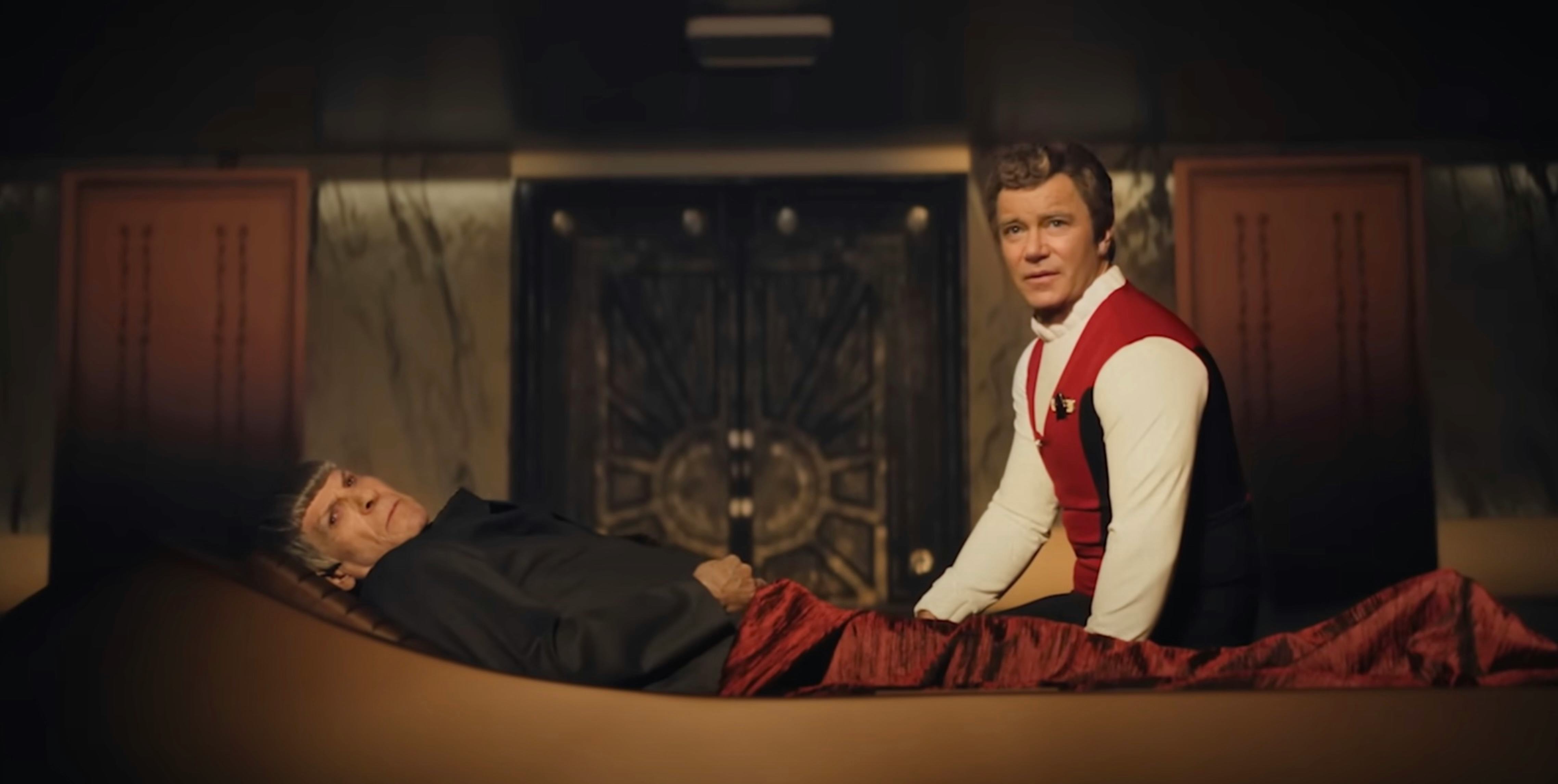
One of the most compelling and affecting things about “Unification” was the naturalistic way William Shatner was portrayed. We see not only Kirk from Generations (which is Shatner in 1994) but also a TOS Kirk from the 2260s and Admiral Kirk from The Wrath of Khan, circa the 2280s. While William Shatner’s likeness is used, beloved genre actor Sam Witwer (The Clone Wars, Battlestar Galactica) played the actual body of Kirk.
“I’ve witnessed firsthand over the past few years how the process has evolved into a true fusion of techniques — combining physical prosthetics with digital 3D effects, all of which can be directed in real-time on set,” Baena says, referring to the OTOY process of using “digital prosthetics” on set, as opposed to motion capture suit or rig. This approach, at least in the case of “Unification” allowed the short to (mostly) avoid the uncanny valley feeling that often occurs in projects like this.
For Banea, this means the approach to directing blended in-camera elements with post-production work. “Digital de-aging isn’t as simple as swapping out faces — that approach never feels truly believable, at least to me,” he says. “To achieve a natural look, every element — prosthetics, digital enhancements, and lighting — must be seamlessly blended and work cohesively from all angles. Our actors do wear prosthetic elements to varying degrees, which are then enhanced with digital facial replacements. Experiencing this technology in real-time has allowed me to focus on the character’s performance rather than just the actor.”

Still, the final result of “Unification,” seeing Kirk and Spock together, watching the sunset, one last time, wasn’t just all about impressive de-aging tech. Banea believes that ultimately, despite any of the deep cuts to Trek canon, or the impressive way in which characters were depicted or recreated, it all came down to the human adventure.
“I chose to lean into body language, facial expression, and internal emotion,” he says. “ The aim was to make the short film universally accessible. The idea was to craft a kind of visual poem.”
